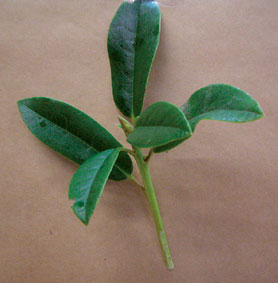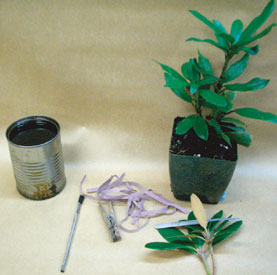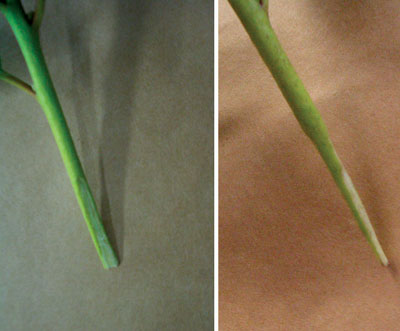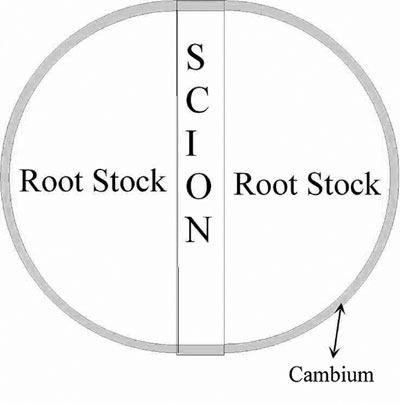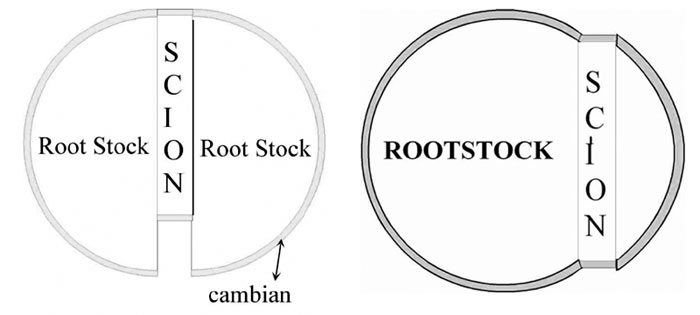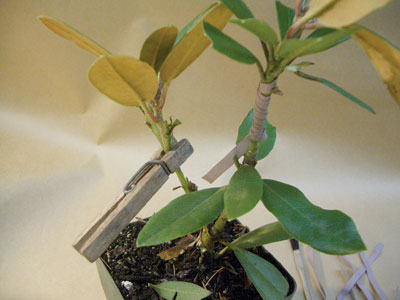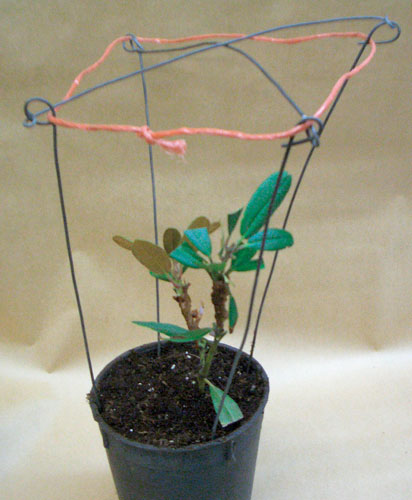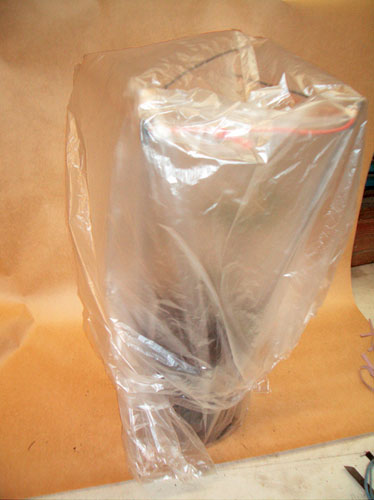
|
|||

|
|||
|
Journal ARS Article |
|||
|
Vol. 66: No. 3: Year 2012 |
|||
|
Experience with Rhododendron Grafting Herb Spady, Silverton, Oregon It has been a long time since I first tried grafting rhododendrons, so I do not now have a good recollection of why I first attempted it. Since I had previously been successful grafting apples and pears, it was a natural step to move on to rhododendrons. I don't recall exactly how I heard that Willard Thompson was grafting rhododendrons. Perhaps he gave a program or wrote an article, so when I received a single cutting of R. degronianum 'Gerald Loder' from Wakehurst, I decided to graft it. Willard described using 'Anna Rose Whitney' as rootstock, so that was what I used. That was when I had my first lesson. I was encouraged by the success of the graft, and so it was planted in the nursery field. It did fine until winter when the understock froze and bark split and the scion died. Lesson: Use hardy rootstock. Subsequently, I have always used 'Cunningham's White'. When I obtained a single cutting of R. pronum at a Portland Chapter cutting exchange, I grafted it because Frank Mossman had written on the bag "Should be grafted." That was also a success. Continuing to use this rootstock, I recall successfully doing the following grafts: R. decorum ssp. diaprepes 'Gargantua', 'Crest', 'Naomi Exbury'*, R. wiltonii, R. traillianum var. dictyotum 'Katmandu'*, 'Glowing Embers', R. tsariense, R. wiltonii. and 'Pink Impression'*. I have never attempted a graft with evergreen or deciduous azaleas. I have also grafted R. kongboense on one of the easier grown plants in Section Pogonanthum. At the time of my first efforts at grafting, we had facilities for doing cuttings. The humidity in any cutting system provides an ideal environment for the healing of a graft, and such humidity must be provided until the cambium layers of rootstock and scion have healed. Currently I have no facility for doing cuttings, but I am able to graft, as I will show you below. Reasons to Graft 1. Poor Root System: In our field plantings, we noticed that many species and some hybrids developed poor root systems on plants grown from cuttings. I mentioned this to Ken Cox and he concurred that it seemed to be true. The question in my mind was, "Would they do better grafted?" My experience has been that they do, and two examples are R. tsariense and kongboense. 2. Plant in Decline or Damaged: In the Smith Garden in Oregon, I encounter plants that were in trouble or damaged. I was able to graft and salvage some of those plants. The original plant of R. traillianum had probably suffered bark split from freezing or physical damage with resulting rotting of the structural part of the stem. Other plants in the Smith garden showed this identical problem. Their fate would be to ultimately break. If the damage were to be from bark splitting, the same damage may later recur on the grafted plant because grafting does not increase the hardiness of the scion. In addition, some other plants needed replacing because they had grown in poor light or under generally poor cultural conditions. 3. No available rooting facility: Because I do not have a rooting facility, I have devised a method of grafting plants without one. Anyone can graft to obtain a few desirable plants from a cutting or two. 4. Only One Cutting Available: It is my feeling that there is less risk of losing a single well done graft than rooting a cutting. However, this depends on the rooting skill and experience of the person doing the grafting. 5. Difficult to Root: Yellow flowered rhododendrons are notoriously difficult to root. The current 'Crest' in the Smith Garden is a plant I had grafted. Scion Wood and Rootstock
Untrimmed and trimmed rootstock Grafting scion Grafting Supplies and Techniques
Grafting knife and sharpening stone Grafting rubber bands and bee's wax Preparation of the Scion and Rootstalk for Grafting
Scion preparation Ideally the rootstalk and scion should be trimmed so that the cut edges are smooth and fit snugly together. Skilled grafters may be able to do that in one cut. I have found that careful revisions may often be necessary. The Importance of Cambium Contact
Center cut graft cross-section, showing the relationship of the scion to the rootstock These are the two options for grafting a small scion on a large rootstalk stem. They both can work, but the angled cut is probably the best. The lateral graft cut is made by cutting from the side of the stem and proceeding toward the center until the desired width is obtained to match the scion width. If the cut goes past the centre of the rootstock though, there is danger that this will weaken the strength of the rootstock stem sufficiently to cause it to break, as the weight of the scion has to be supported by the uncut rootstock.
Center cut graft cross-section (left) with a scion of smaller diameter than the rootstock, Securing the Scion
Two methods of securing the scion The Healing Environment
Wire frame Covered grafted plant This covered pot should be stored outside in an area devoid of direct sunlight As direct sunlight will fry the contents. I store the pots in a canopy that receives no direct sunlight. Do not be impatient. The graft will take several months to heal. The best sign for healing is growth of the scion. After you see it beginning to make growth, give it a little more time before removing the cover and placing the pot in a shady place. Here again, not too much direct sunlight until good vigorous growth of the graft is apparent. * = name not registered Herb Spady is a Past President of the ARS and a member of the Willamette Chapter. |
|||
|
|
|||

